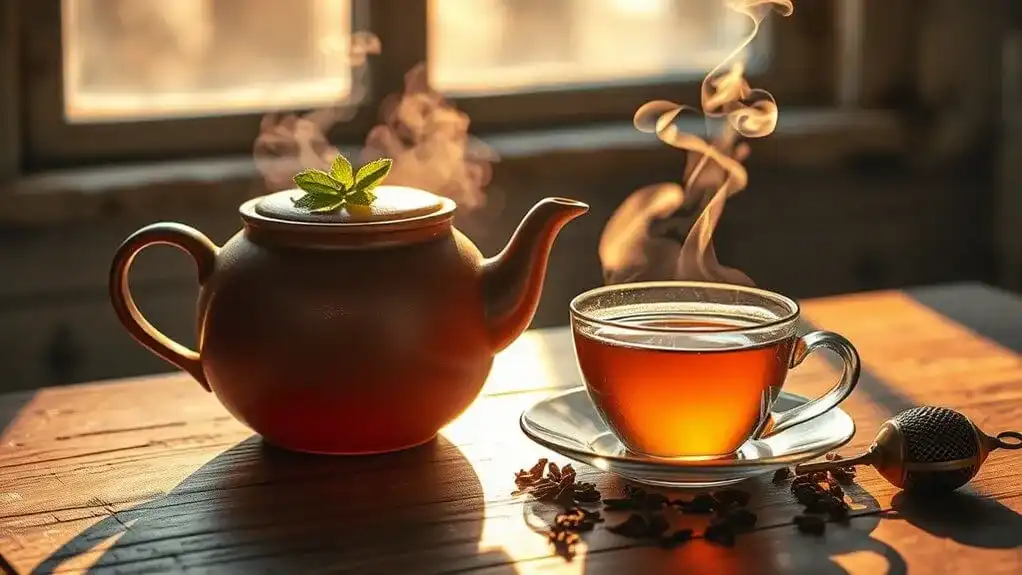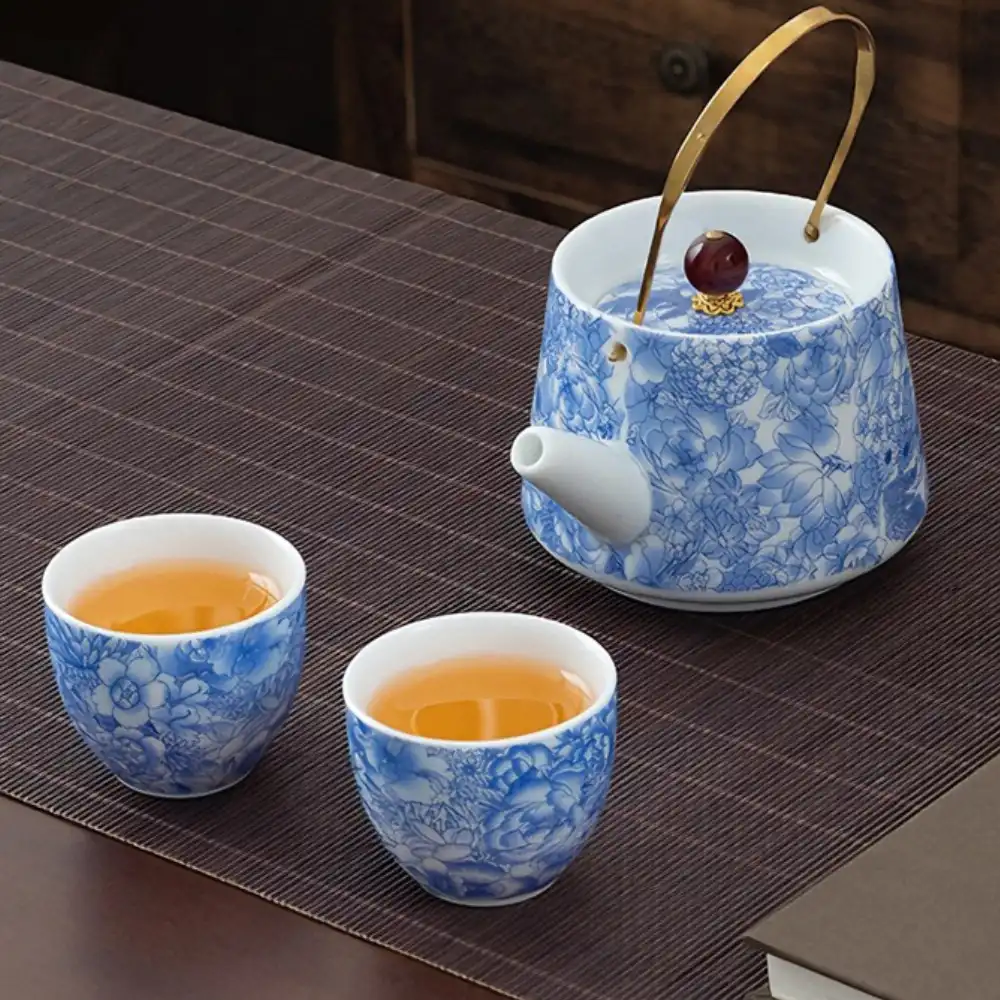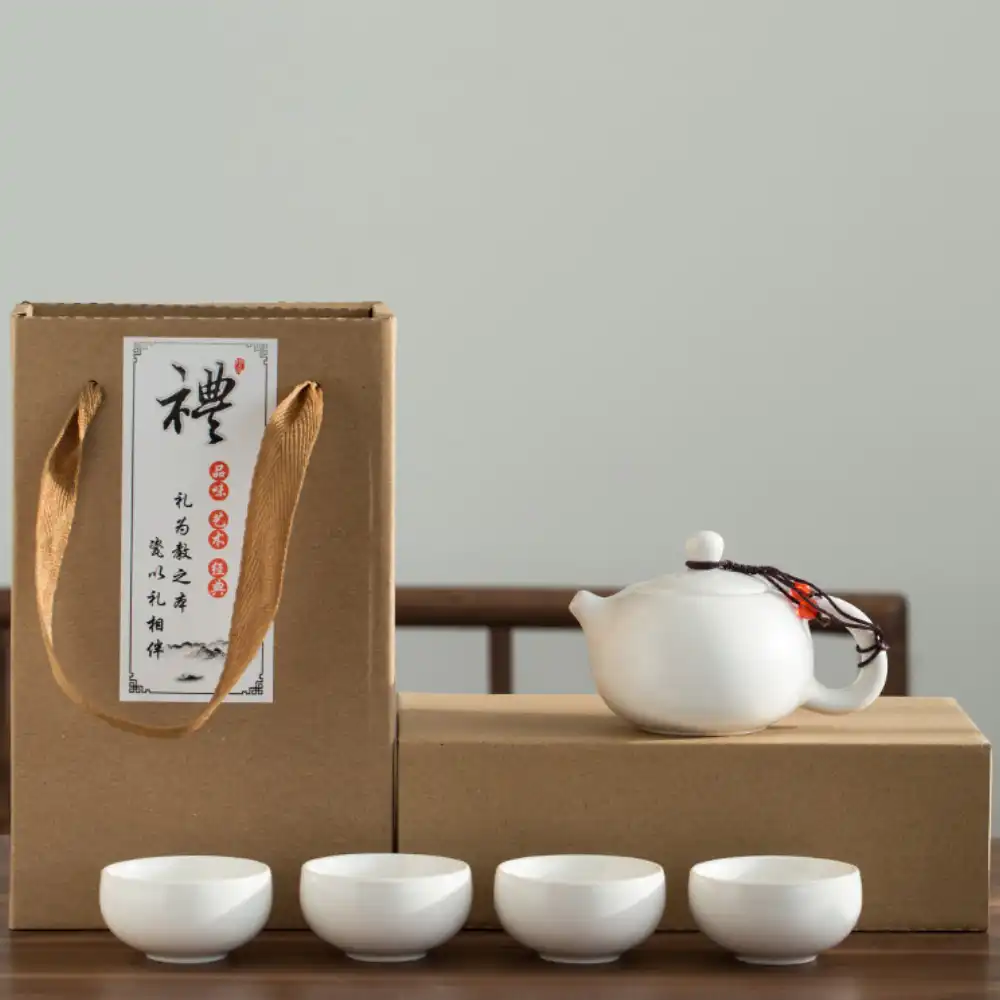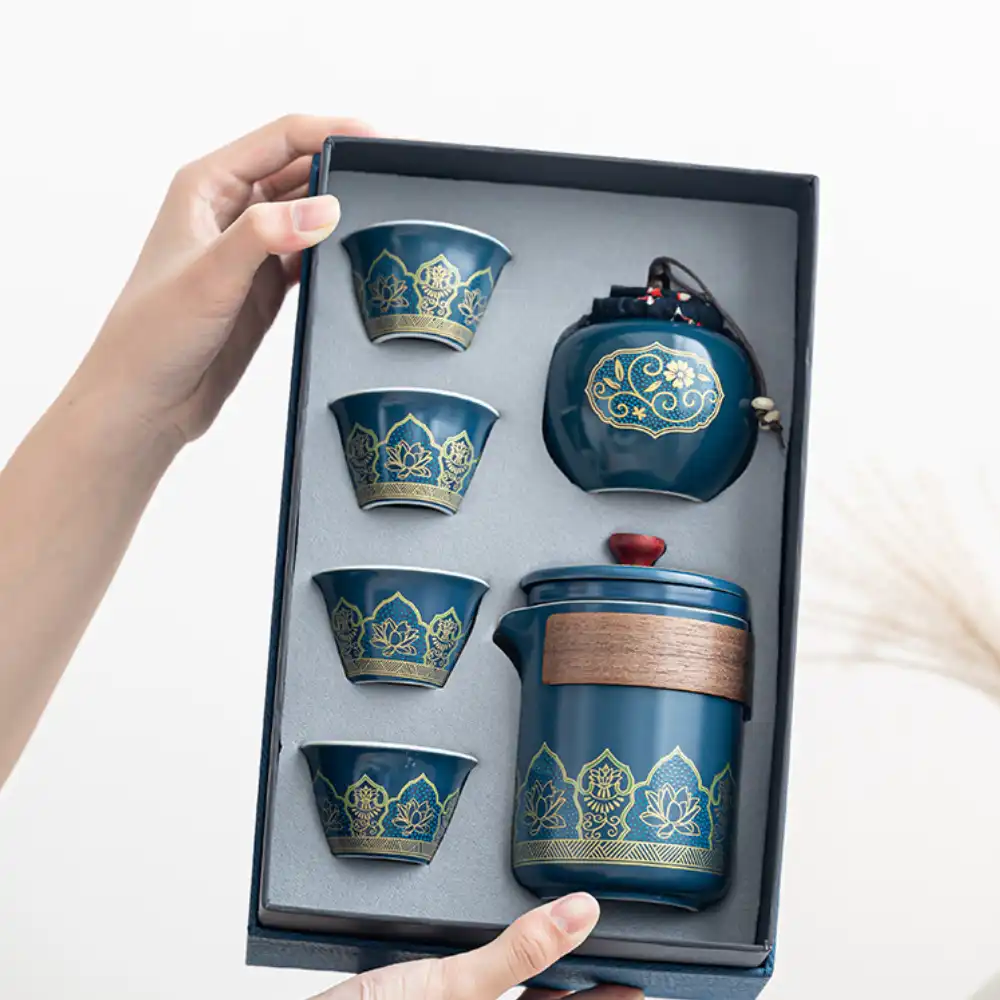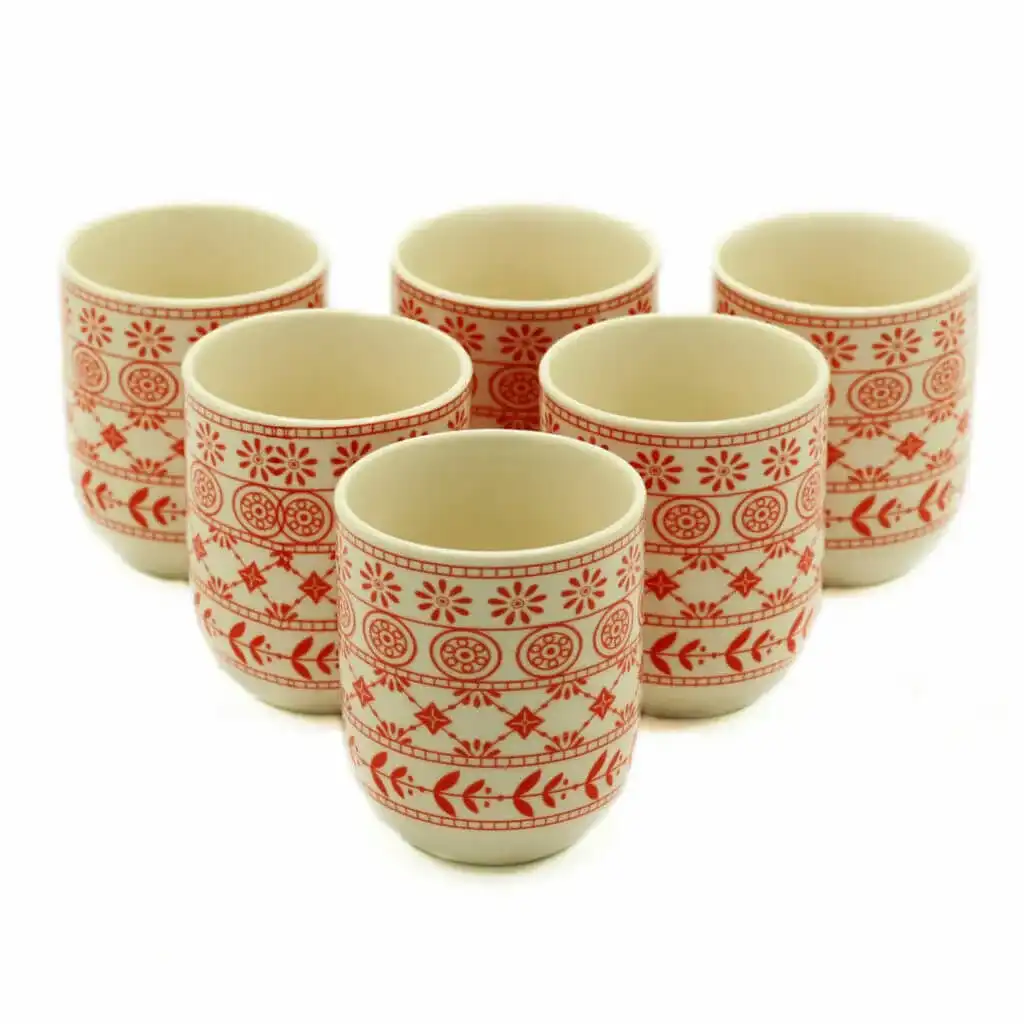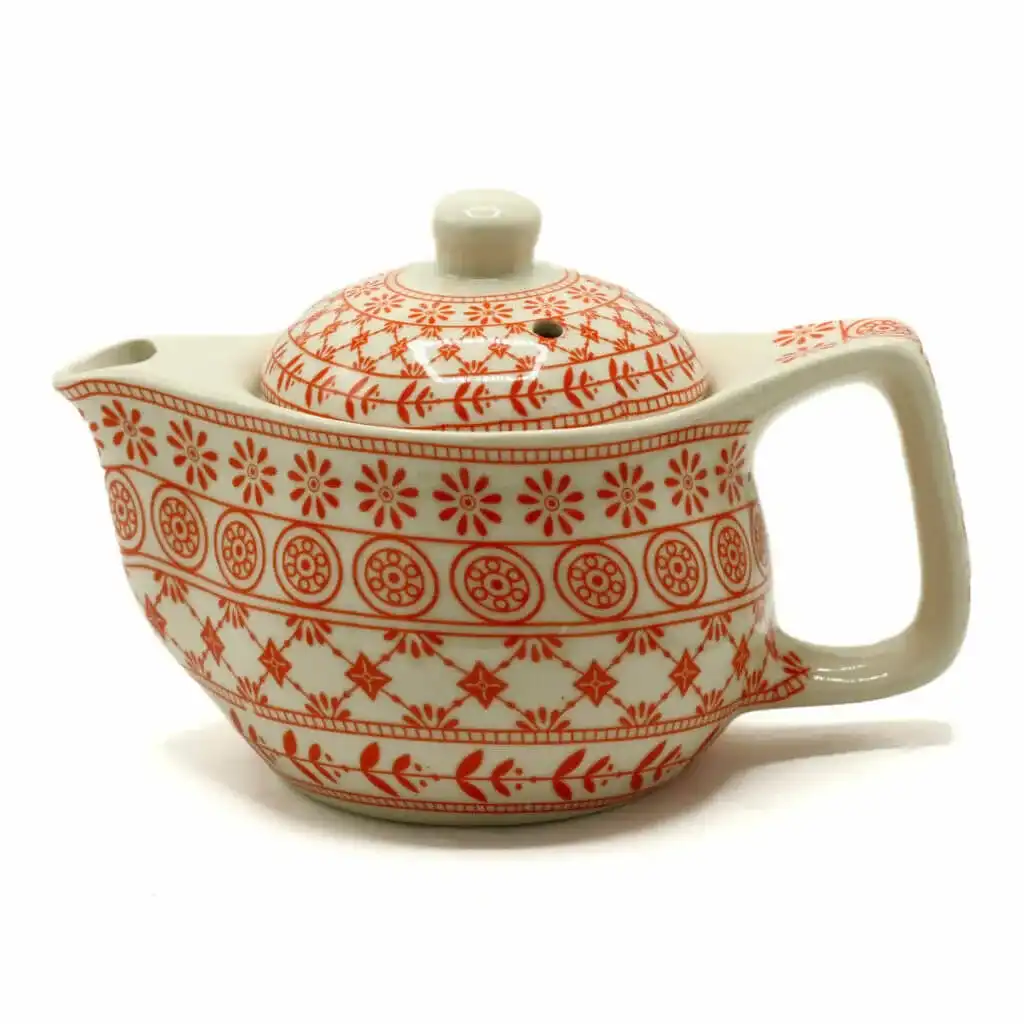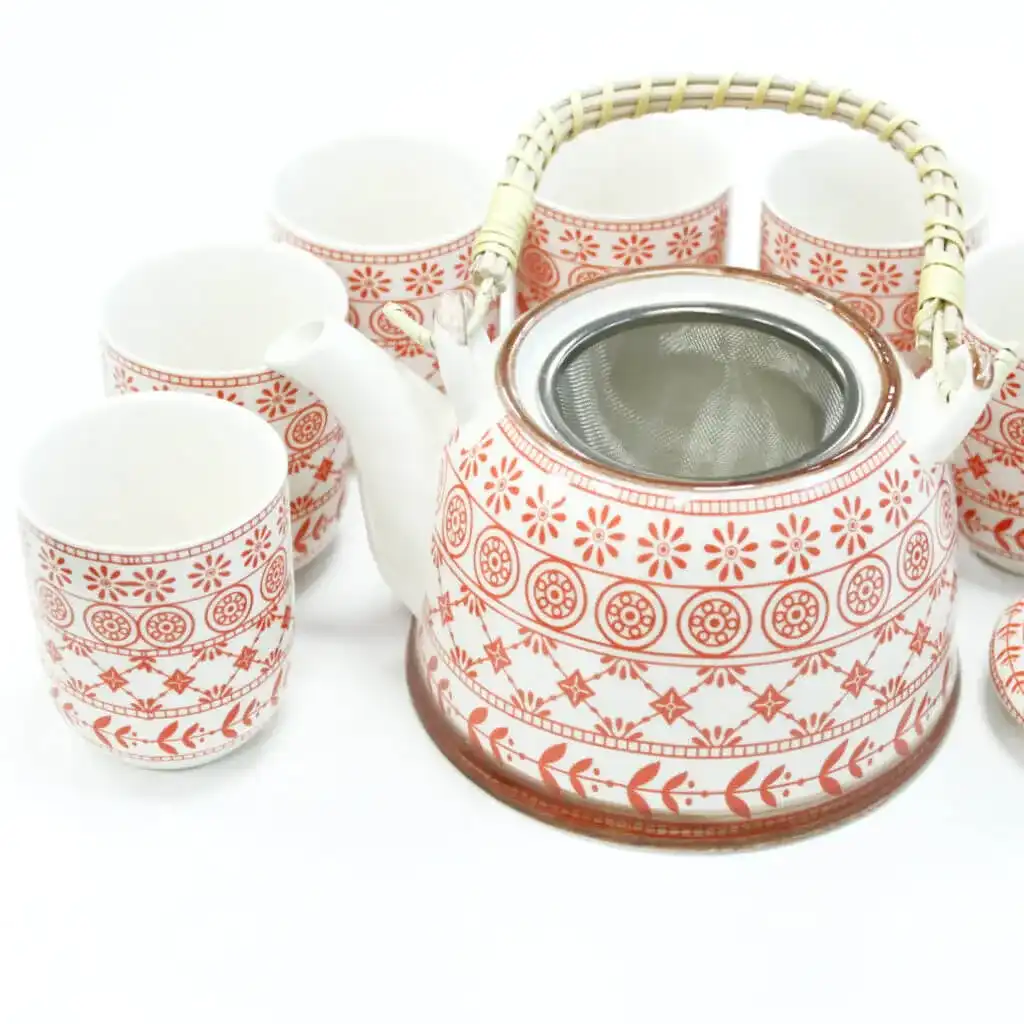Morning tea rituals reflect the unique cultural heritage of societies worldwide. The Japanese tea ceremony emphasizes harmony and mindfulness through precise movements, while Chinese gongfu cha celebrates nature's connection with careful brewing methods. British customs feature breakfast tea with milk, and Taiwanese practices blend multiple influences. Each culture's distinct approach to morning tea creates meaningful moments that start the day with intention, and these cherished traditions hold deeper significance worth exploring.
Key Points
- Japanese tea ceremonies emphasize four principles: harmony, respect, purity, and tranquility, creating a mindful start to the day.
- Chinese morning tea traditions vary by region and often include family gatherings where younger members serve tea to elders.
- British morning tea customs typically feature breakfast tea with milk and sugar, influenced by Victorian-era social practices.
- Indian households begin their day with spice-infused Masala chai, combining traditional brewing methods with aromatic ingredients.
- Taiwanese families integrate tea throughout their morning routines, blending Chinese and Japanese influences while maintaining unique cultural elements.
The Sacred Art of Japanese Morning Tea
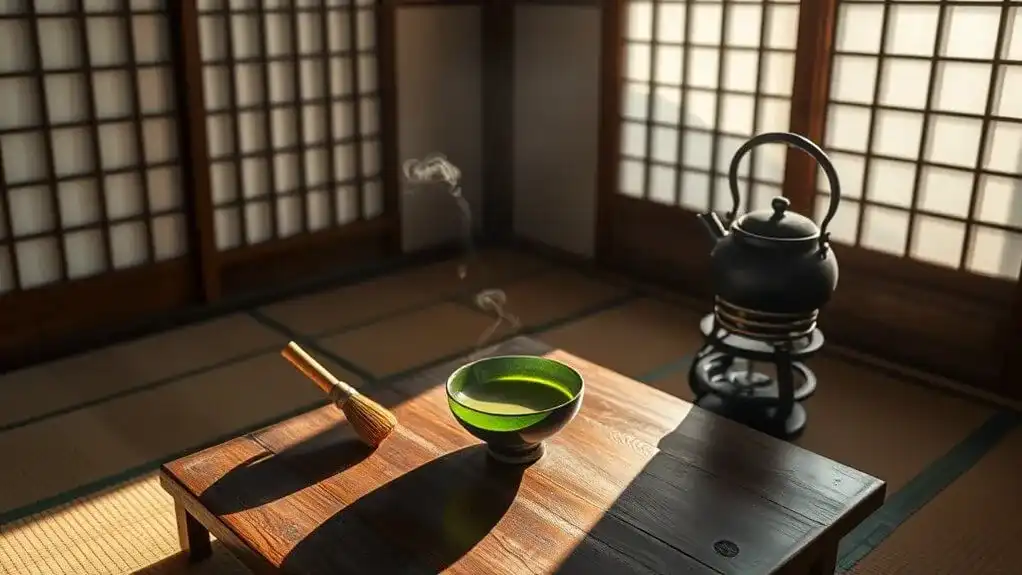
While many cultures embrace tea drinking, the Japanese tea ceremony stands as one of history's most refined and spiritually significant morning rituals. Dating back to the 9th century when Buddhist monk Eichu served tea to Emperor Saga, this practice evolved through centuries of Chinese influence and Zen Buddhist tradition. In modern times, the ceremony has become a sacred healing practice for those seeking stress relief and mindfulness.
The ceremony's tea aesthetics reflect the wabi-sabi philosophy of finding beauty in simplicity. Three major schools, founded by tea master Sen no Rikyu, continue to preserve and teach these cherished traditions today. Each movement in the preparation of matcha follows the four core principles of harmony, respect, purity, and tranquility. This ceremonial mindfulness transforms a simple tea preparation into a profound cultural experience. Using traditional tools like the chawan and chasen, hosts perform precise steps called temae while guests participate in ritual purification. The practice serves not just as a way to enjoy tea, but as a method to cultivate inner peace and human connection. The concept of ichi-go ichi-e reminds participants to treasure each unique gathering, as it can never be replicated exactly the same way again.
China's Dawn Tea Traditions and Daily Rituals
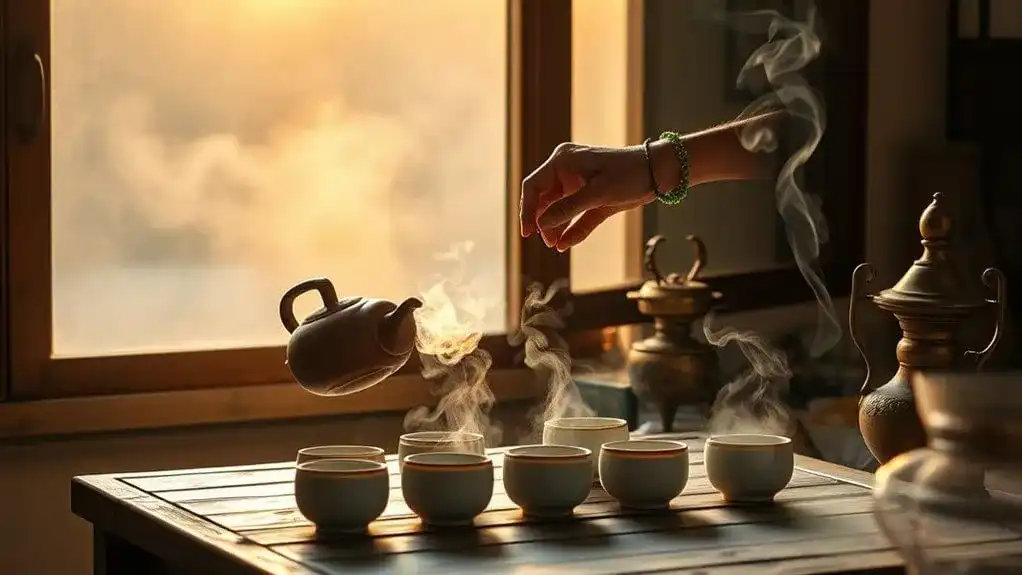
As the birthplace of tea culture, China's morning tea traditions represent some of humanity's oldest and most enduring daily rituals. Chinese tea practices vary across regions, with each area developing its own unique customs and etiquette. The Gongfu cha method emphasizes harmony with nature through precise brewing steps and pure water sources. Different tea sets are carefully selected based on the type of tea being served, with special consideration given to material and design. The traditional practice of serving tea upward reinforces filial piety as younger family members honor their elders during morning gatherings. Tea's significance in Chinese culture dates back over four millennia, when it was first discovered in Southwest China and recognized for its invigorating properties.
In Guangdong province, morning tea rituals have evolved into elaborate social gatherings featuring:
- Traditional dim sum served alongside various teas
- Special tea service customs, like finger-tapping to show gratitude
- Multiple tea varieties, from oolong to pu-er
- Formal and informal settings for friends and business partners
These regional variations showcase how Chinese tea culture adapts while maintaining its core values of respect, community, and connection to nature. Modern practices continue to honor these ancient traditions while embracing contemporary influences.
Taiwanese Tea Culture: Where Tradition Meets Modern Life
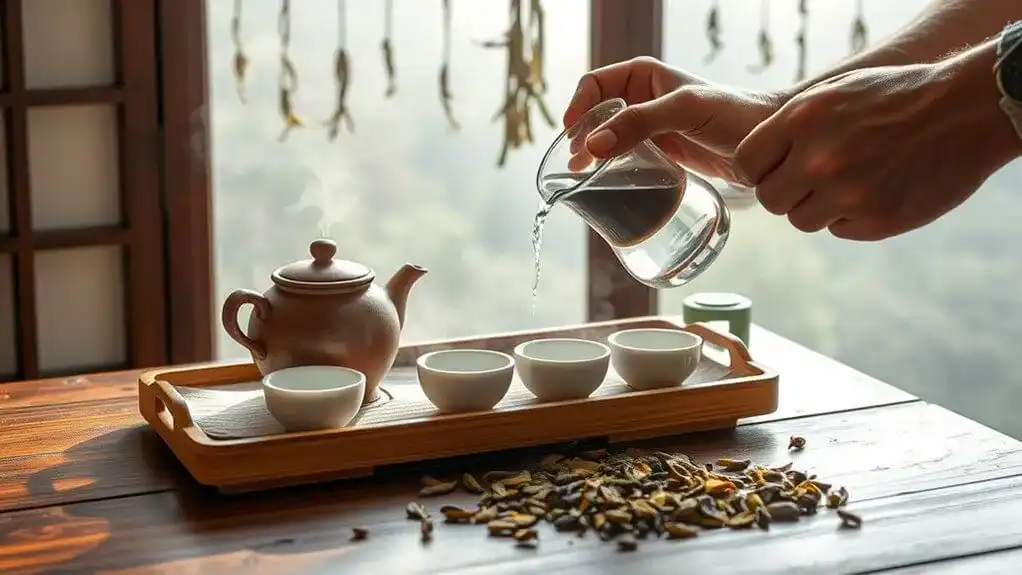
The rich tapestry of Asian tea culture extends beyond mainland China to Taiwan, where centuries of Chinese and Japanese influences have shaped a distinctive tea tradition. Taiwan's tea ceremony stands out for its more relaxed approach, blending formal elements with an emphasis on community bonding and friendship. The introduction of bubble tea in the 1980s revolutionized how younger generations engage with tea culture.
The ceremony follows a precise sequence: warming the pot, rinsing leaves from a height, and the gentle "spring wind" step of removing debris. What makes Taiwan's approach unique is its integration of both Chinese Gongfu and Japanese ceremonial elements, while maintaining its own identity. The tradition of Gongfu cha remains deeply rooted in daily practice. Tea sets feature both tall and short cups, allowing participants to first appreciate the tea's aroma before savoring its taste. This morning ritual reflects Taiwan's commitment to preserving tradition while embracing a more accessible tea culture. Rather than designating specific times for tea consumption, Taiwanese families freely incorporate tea drinking throughout their daily routines.
The Evolution of British Morning Tea Customs
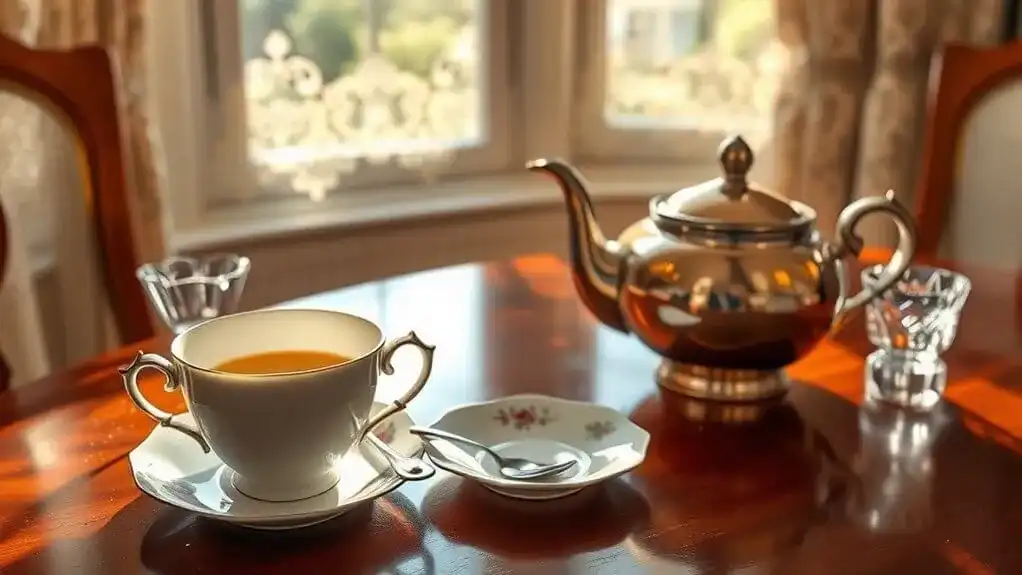
Since King Charles II and his Portuguese wife Catharine de Braganza popularized tea drinking in England during the 1660s, British tea customs have evolved into deeply ingrained cultural practices. Morning rituals around tea became especially significant during the Victorian era, when tea breaks emerged as essential parts of the workday for those starting at dawn. Families traditionally enjoy their first cuppa at breakfast to start their day.
British tea ceremonies vary across social classes, but common elements include:
- Starting the day with breakfast tea, often served with milk and sugar
- Using specific china and serving methods that reflect social status
- Pairing tea with traditional morning foods
- Following established brewing and serving customs
Victorian customs around morning tea initially faced resistance from industrialists, but they've become fundamental to British work culture. The Duchess of Bedford is credited with establishing many of the tea customs that shaped British society in the 1840s. Regular dinner times between eight and nine pm made morning tea rituals particularly important for sustaining energy throughout the day. Today, these morning rituals remain central to British identity, though they've adapted to modern lifestyles.
Mindful Moments: Tea's Role in Morning Meditation
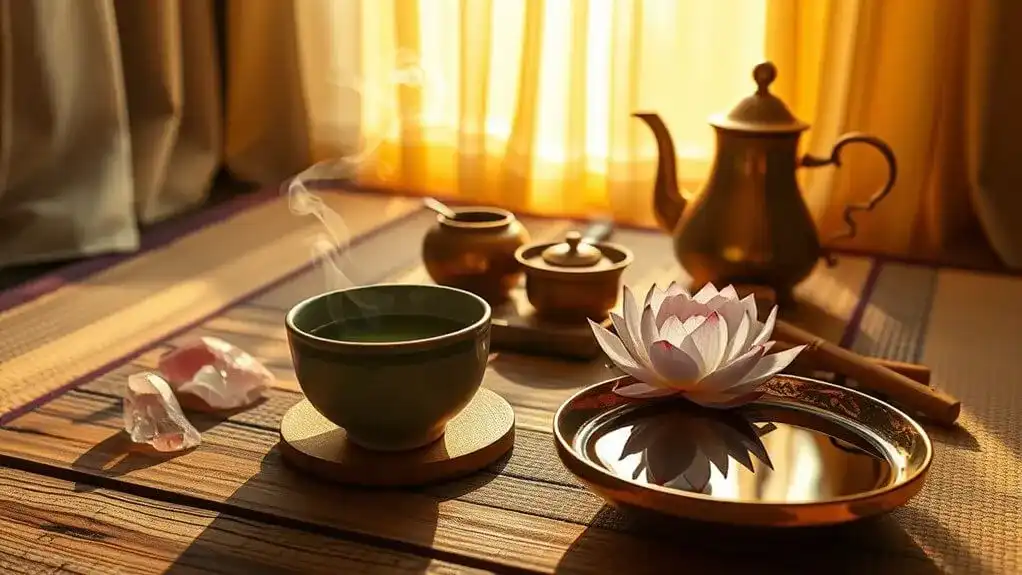
Modern tea rituals have evolved beyond social customs into powerful tools for mindfulness and meditation. By integrating mindful sipping into morning routines, people can cultivate mental clarity and reduce stress before facing their day. The practice combines the therapeutic benefits of tea with meditation's calming effects, creating a powerful self-care ritual. Engaging all senses during the ritual experience deepens the connection to the present moment.
Starting the day with tea meditation helps begin with purpose, setting an intentional tone for the hours ahead. The key to effective tea meditation lies in sensory engagement. Practitioners focus on the tea's aroma, observe its color, feel its warmth, and savor each sip with full attention. The gentle sound of birds singing in the morning mist creates a natural backdrop for deeper contemplation. This multisensory experience helps ground individuals in the present moment, fostering a deeper mind-body connection. Whether using traditional green tea or calming chamomile, the ritual's effectiveness comes from consistent practice and intentional preparation. Many find that dedicating specific morning time to this practice creates a peaceful foundation for the day ahead.
Global Tea Preparation Methods at Daybreak
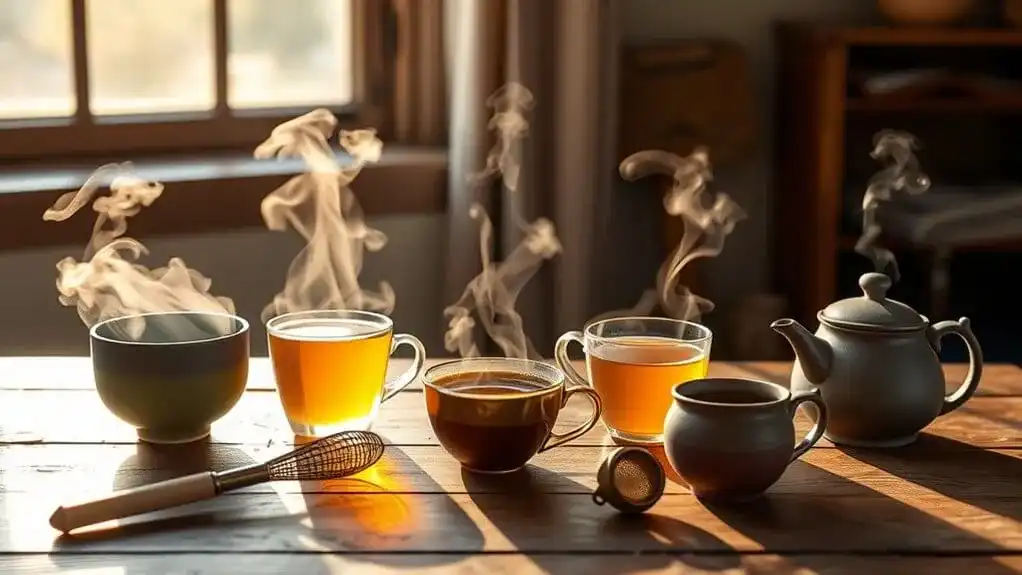
Across diverse cultures worldwide, morning tea preparation rituals reflect centuries-old traditions that continue to shape daily practices. In East Asia, Gongfu brewing emphasizes precision with short steeping times and high leaf-to-water ratios, while Indian households start their day with aromatic Masala chai, simmered with warming spices. In traditional Russian homes, the charcoal-heated samovar provides continuous hot water for morning tea service. The art of tea preparation demands exceptional ingredients and thoughtful attention to create a meaningful morning experience. Australians embrace tea as a vital morning ritual, consuming 9.5 billion cups annually as part of their cultural heritage.
Each culture's morning tea ritual offers unique approaches to beginning the day:
- East Asian practitioners use small vessels and multiple infusions to reveal complex flavors
- Indian families gather as spice-infused chai brings warmth to social connections
- Western brewing methods favor longer steeps with larger pots for convenience
- Water temperature selection remains essential across all traditions for best results
These distinct methods showcase how different cultures have adapted tea preparation to suit their morning routines while maintaining the beverage's vital role in daily life.
Passing Down Tea Heritage Through Generations
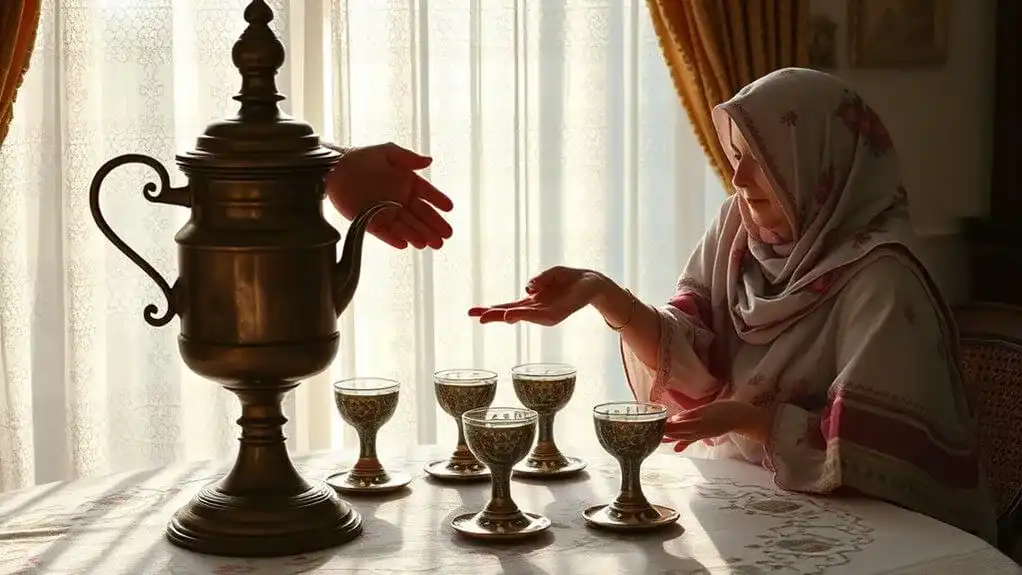
Throughout generations, the sacred art of tea preparation has served as a bridge connecting family members through shared rituals and meaningful traditions. From China's Gongfu ceremony to Morocco's Atai, elderly family members take pride in teaching younger generations the intricate methods of brewing the perfect cup. In Russia, families gather around the traditional samovar urn to share warmly brewed tea and conversation together. In Korea, the elegant darye ceremony carries deep cultural significance as a mindful practice passed between generations. Tea storytelling becomes a natural part of these morning rituals, as grandparents share ancestral tales and wisdom while demonstrating proper techniques. Strong family bonds are reinforced during shared tea moments that encourage open dialogue and connection. Family recipes, often carefully guarded and passed down as precious heirlooms, preserve each family's unique heritage through special tea blends. Whether it's the formal Japanese Chanoyu or England's casual afternoon tea, these customs teach respect, mindfulness, and cultural appreciation. Through traditional teaware and time-honored brewing methods, families continue to preserve their tea heritage, ensuring these cherished practices endure for future generations.
The Modern Transformation of Morning Tea Practices
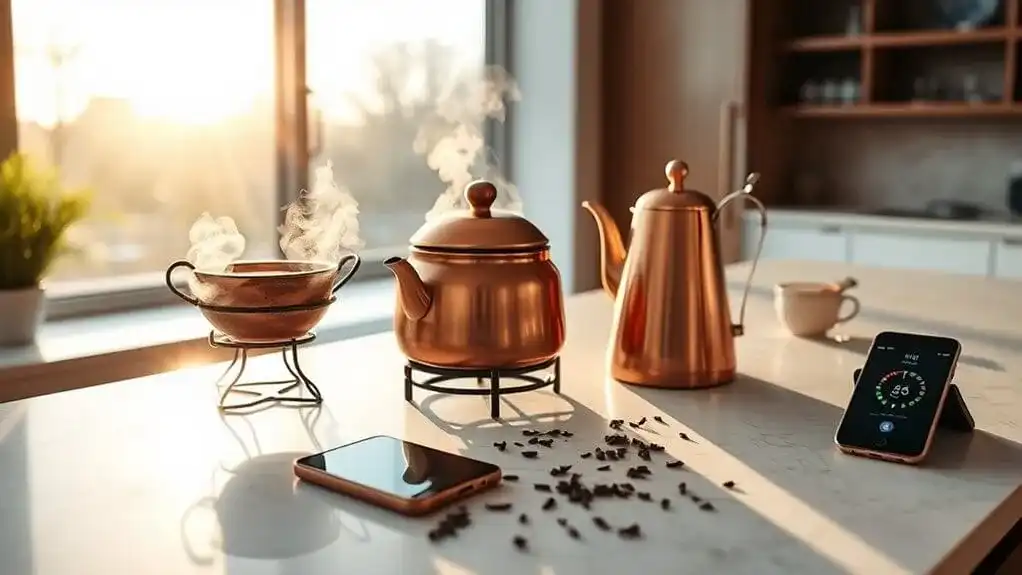
How has the cherished tradition of morning tea evolved in today's fast-paced world? Morning tea practices have transformed into modern wellness rituals that blend ancient wisdom with contemporary needs. Cultural fusion has given rise to innovative approaches, combining traditional ceremonies with digital-age adaptations.
Today's morning tea enthusiasts are embracing new practices that reflect our changing lifestyle:
- The "eight minute digital detox" pairs tea drinking with mindful disconnection from technology
- Marie Kondo's daily tea ritual integrates mindfulness and gratitude
- Health-conscious consumers choose tea for its scientifically proven benefits
- Social media platforms spread global tea traditions, making them accessible worldwide
Practitioners often begin their mornings with gentle stretches while their tea steeps, creating a harmonious mind-body connection.
Ancient Chinese Gong Fu Cha traditions have inspired a new wave of precise brewing methods among modern tea enthusiasts.
Early Chinese practitioners recognized tea primarily for its medicinal properties, establishing a foundation for today's wellness-focused consumption.
This evolution shows how morning tea rituals remain relevant while adapting to modern life, proving that traditional practices can thrive in contemporary settings without losing their cultural essence.
Conclusion
Like a delicate tea leaf that unfurls in hot water, morning tea rituals continue to reveal new layers of meaning across cultures. While a Japanese tea master still whispers centuries-old wisdom during dawn ceremonies, a London commuter clutches their to-go cup of English Breakfast. Today's morning tea practices aren't disappearing – they're adapting, proving that tea's power to connect and ground us remains as potent as ever.
